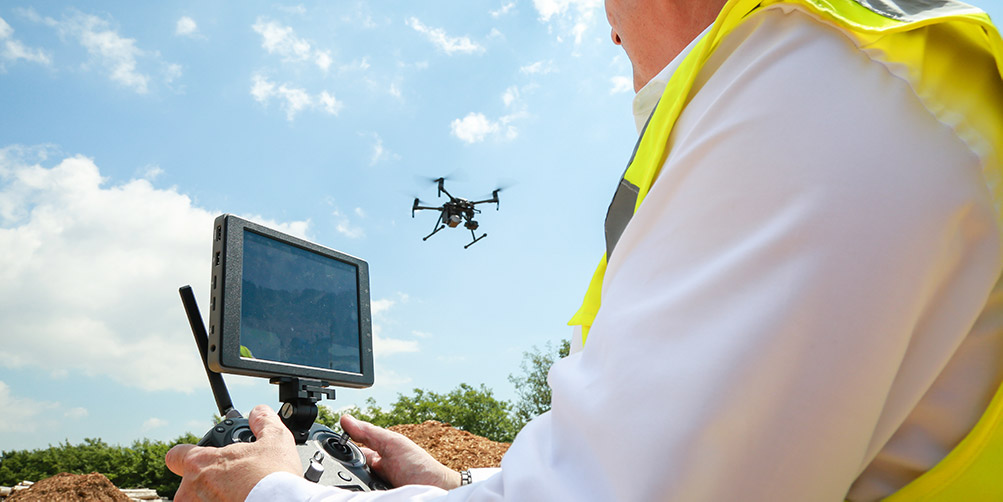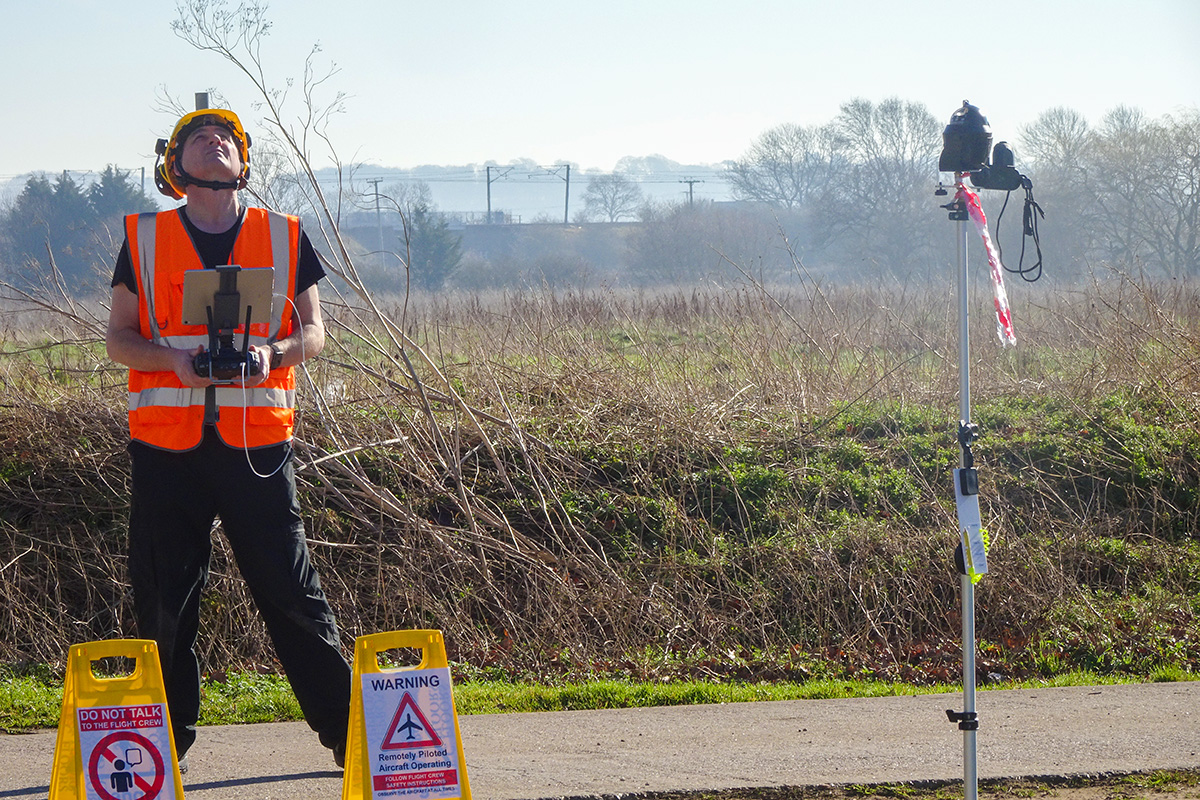How to fly your drone with EVLOS and BVLOS
Most drone operators only need to fly where they can see their drone clearly. In these situations, operators will navigate using Visual Line of Sight (VLOS).
Flying using VLOS is legally restricted to the distance at which the drone can be seen clearly. This is for navigation purposes, and it is limited to a maximum distance of 500 meters.

Drone pilot flying within visual line-of-sight
Whilst this works for most drone pilots, sometimes it’s useful to fly beyond this distance. For example, when mapping large areas or during search and rescue operations.
What is EVLOS and BVLOS?
EVLOS stands for Extended Visual Line of Sight.
EVLOS is when a drone is navigated using spotters, who relay information about a drones flight path to the remote pilot. Within the drone industry, EVLOS is quickly growing in demand, with more and more drone operators being asked to fly beyond 500 meters.
BVLOS stands for Beyond Visual Line of Sight.
BVLOS is when a drone is flown beyond the distance in which it can be seen with the naked eye. Many companies are now experimenting with BVLOS, as it can open up a new world of possibilities for remote inspections. Due to the specialist nature of these flights, BVLOS has its own set of rules for a safe and legal flight.

Training Manager Steve Welland during an EVLOS drone flight.
Flying using EVLOS or BVLOS
To fly using EVLOS or BVLOS, drone pilots must first get an additional permission from the CAA. This is in the form of an Operating Safety Case.
An Operating Safety Case (“OSC”) is a comprehensive document that is split into 3 sections. Each section looks at a separate element to do with safe drone operation. These are:
- Operations Manual
- Systems Assessment
- Safety Assessment
An OSC can often be over 200 pages long, and must be unique for each drone operator. In other words, creating this document isn’t a quick job.
To help make getting an Operating Safety Case easier, iRed have developed a comprehensive course to help save pilots both time and money. The course has been designed to achieve the following additional permissions:
- Reduced take-off and landing (TOAL) safety cordons for congested areas
- Reduced operational safety cordons for congested areas
- Reduced distance from open-air organised events of more than 1,000 people
- Increased operational altitude (above 400ft)
- EVLOS operations
- BVLOS operations
As one of the few operators in the UK with experience of successfully submitting an Operating Safety Case, iRed’s team of industry experts aim to make the application process as easy as possible. We provide pilots with the framework, advice and support to quickly achieve a OSC – letting you fly where a standard operator cannot.
Learn more: https://ired.ac.uk/courses/operating-safety-case-training-course/

